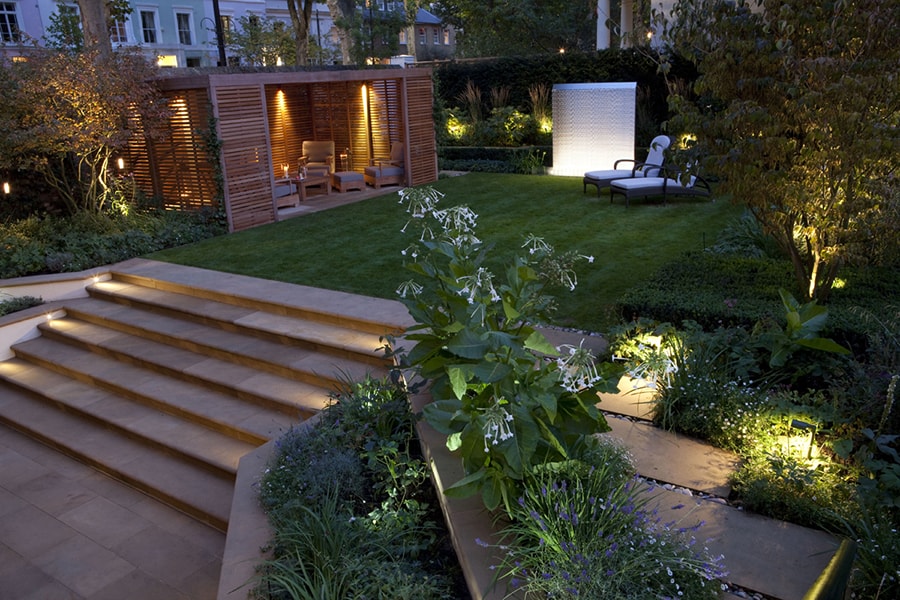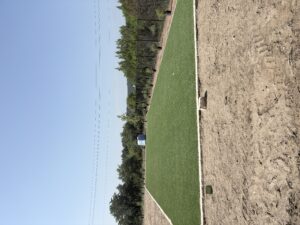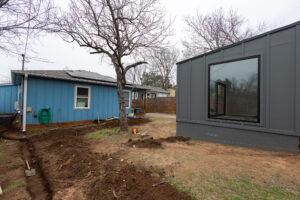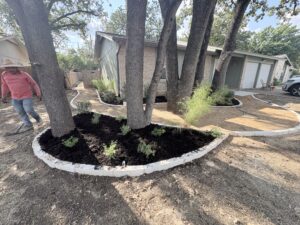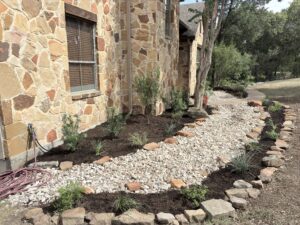Are you looking to enhance your outdoor space and help local wildlife thrive? Transform your Austin-area yard into a sanctuary for birds, bees, butterflies—and even backyard pals like lizards and frogs—using thoughtful landscaping design. At Culture Scapes ATX, we’ve helped homeowners in Austin, Cedar Park, Leander, and beyond create stunning, wildlife-friendly ecosystems that are both beautiful and environmentally beneficial. Here’s how you can design a backyard that nurtures local wildlife year-round.
1. Understanding Local Ecosystems
Central Texas boasts diverse ecosystems—from oak-juniper woodlands to riverside zones. Designing with wildlife in mind means:
-
Choosing native plants that offer food, shelter, and breeding habitat.
-
Prioritizing habitat connectivity, allowing birds, beneficial insects, and mammals to move easily between green spaces.
By working with local ecosystem patterns, we create landscapes that improve biodiversity and adapt to regional challenges like heat and drought.
2. Planting Native for Pollinators
Native wildflowers, shrubs, vines, and grasses are the foundation of wildlife landscapes:
| Plant Type | Examples & Wildlife Benefits |
|---|---|
| Wildflower patches | Black-eyed Susans, Bluebonnets → feed native bees and butterflies |
| Shrubs & small trees | Texas Lantana, Gregg’s Mistflower → attract hummingbirds and provide nesting habitat |
| Nectar vines | Coral Honeysuckle, Cesar’s Permit → magnetize hummingbirds and pollinators |
| Grasses & seed plants | Little Bluestem, native sunflowers → essential for sparrows, finches, and seed-loving critters |
These plantings unfold in waves, offering food and shelter across all seasons—especially vital during migration periods.
3. Water in the Landscape: Birds, Amphibians & More
Incorporating water features turns a garden into a living ecosystem:
-
Shallow birdbaths with gentle slopes encourage bird use and diversity.
-
Moving water features like bubblers or drips help conserve water and stay cleaner longer.
-
Rain gardens or seasonal pools collect runoff—supporting frogs and beneficial pollinators year-round.
Our designs integrate these water elements into patios, pathways, and garden beds, enhancing functionality and fauna usage.
4. Creating Shelter & Nesting Areas
Wildlife needs more than food; they need shelter:
-
Brush piles and rock piles offer hiding places for lizards, insects, and small critters.
-
Native grasses and perennial beds provide nesting material for birds in spring.
-
Snags and dead wood (when safe) act as homes for woodpeckers and insects.
-
Bee homes and insect hotels installed near flowering plants provide pollinator habitat.
These natural retreats are integrated into garden edges or along hardscape features without sacrificing aesthetic appeal.
5. Avoiding Harmful Chemicals
To truly nurture wildlife, landscapes must be chemical-free:
-
We focus on integrated pest management (IPM) for natural pest control through beneficial insects and habitat-based strategies.
-
No herbicides or pesticides are used, adhering to pet- and pollinator-friendly protocols.
-
We employ companion planting—using pest-repelling plants like native marigolds or lemongrass for a natural balance.
Healthy soils and plantings naturally deter pests while fostering biodiversity.
6. Seasonal Planning: Year-Round Wildlife Support
Our approach ensures your garden offers resources all year:
-
Spring: Blooming native wildflowers for nest-building and food.
-
Summer: Dense vegetation, cooling shade, and water sources.
-
Fall: Seed plants for migrating birds and ground cover for overwintering insects.
-
Winter: Evergreen shrubs and grasses offering shelter and forage.
We stagger plantings in design blueprints to ensure continuous cover and resources for wildlife.
7. Hardscape & Design Integration
We balance functionality with habitat goals:
-
Natural stone pathways with plant pockets invite wildlife movement.
-
Living retaining walls with native grasses and succulents double as soil retention and wildlife microhabitats.
-
Raised beds with mixed plant communities encourage passive foraging and insect refuge.
-
Outdoor rooms like courtyards provide controlled habitat areas near patios.
These designs bring beauty, utility, and ecological benefit to your yard.
8. Real-World Example: Leander Habitat Garden Revamp
A recent project in Leander exemplifies wildlife-centric design:
Before: Monoculture lawn with no wildlife use—desiccated soil and poor irrigation.
After:
-
Native grasses replaced 50% of the turf.
-
Wildflower border seeded with milkweed, salvia, and coneflower.
-
Rain garden collecting roof runoff planted with sedges and iris.
-
Stone-filled parkway mix host habitat for solitary nesting bees.
-
Solar bubbler fountain added to patio, benefiting birds all year.
Result: Within a season, sightings of 15+ bird species, frequent hummingbird visits, and butterflies among blooming perennials. Soil health improved, and outdoor living was enriched with wildlife activity.
9. Maintenance for the Wildlife Garden
We provide maintenance plans aligned with ecological goals:
-
Seasonal pruning and debris management, retaining brush and wood piles.
-
Irrigation adjustments with drought cycles to simulate natural rain patterns.
-
Plant replacements after decline, ensuring habitat continuity.
-
Eco-checks to monitor wildlife use—adjusting plantings based on activity.
10. Why Culture Scapes ATX?
We specialize in local ecological landscaping:
-
Local flora & fauna expertise ensures resilient, climate-adapted landscapes.
-
Integrated design harmonizes wildlife needs with architecture and lifestyle.
-
Full service from consultation to habitat-friendly installation and care.
-
Environmental stewardship aligns with client values and eco-conscious living.
🐝 Final Thoughts
Your backyard can be more than a yard—it can be a thriving ecosystem supporting local wildlife. At Culture Scapes ATX, we blend beauty, biodiversity, and usability to craft backyard habitats that enrich outdoor living and nurture native species.
🔗 Ready to transform your yard into a wildlife haven? Contact Culture Scapes ATX to plan a free habitat-friendly landscaping consultation.

